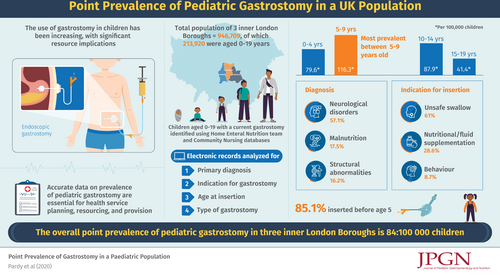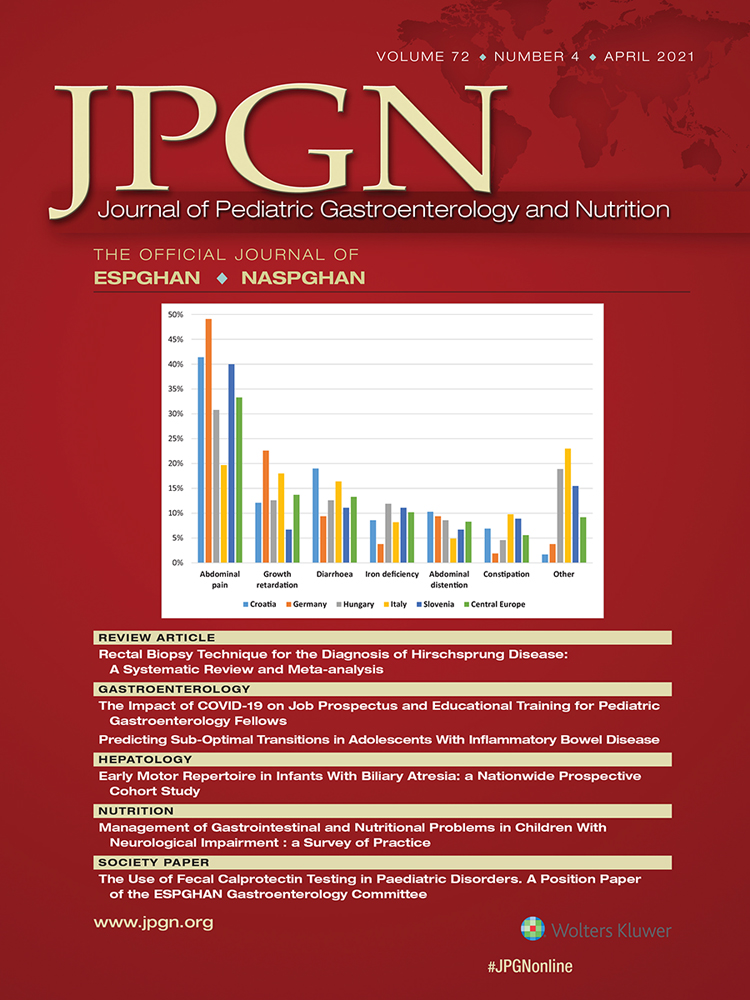Point Prevalence of Gastrostomy in a Paediatric Population
Supplemental digital content is available for this article. Direct URL citations appear in the printed text, and links to the digital files are provided in the HTML text of this article on the journal's Web site (www.jpgn.org).
The authors report no conflicts of interest.
An infographic is available for this article at:http://links.lww.com/MPG/C123.
ABSTRACT
Objective:
The aim of the study was to determine the prevalence of gastrostomy in a paediatric population.
Methods:
A population-based cross-sectional point prevalence study of paediatric gastrostomy was performed. Patients included were ages 0 to 19 years, living within 3 inner-city London boroughs; Southwark, Lambeth, and Lewisham. Patients were identified as having a gastrostomy in situ via Home Enteral Nutrition (HEN) and community nursing databases. Electronic healthcare records were scrutinised to confirm current use of a gastrostomy. The main outcome measures were the point prevalence of gastrostomy in the paediatric population (gastrostomies/100,000 children), primary diagnosis, indication underlying gastrostomy insertion, and age at insertion.
Results:
The total population studied was 946,709, of whom 213,920 were of age 0 to 19 years. Of these, 179 had a gastrostomy in situ giving a point prevalence for gastrostomy in the paediatric population of 83.7 (95% confidence interval [CI]: 71.4–96.0)/100,000 children. This varied between age groups: 0 to 4 years: 79.6 (57.3–102.0)/100,000, 5 to 9 years: 116.3 (88.7–143.9)/100,000, 10 to 14: years 87.9 (61.9–113.9)/100,000 and 15 to 19: years 41.4 (22.1–60.1)/100,000. The most common primary diagnoses were neurological disorders (57.1%), and structural abnormalities (16.2%). Unsafe swallow was the most common indication (61%), followed by nutritional or fluid supplementation (28.6%), and behavioural reasons (8.7%). The majority (85.1%) of gastrostomies were inserted under the age of 2 years.
Conclusions:
This is the first UK population-based study of paediatric gastrostomy, identifying a point prevalence of 84/100,000 children. The peak prevalence is in children ages 5 to 9 years. Gastrostomy insertion after a child reaches school age is uncommon.





